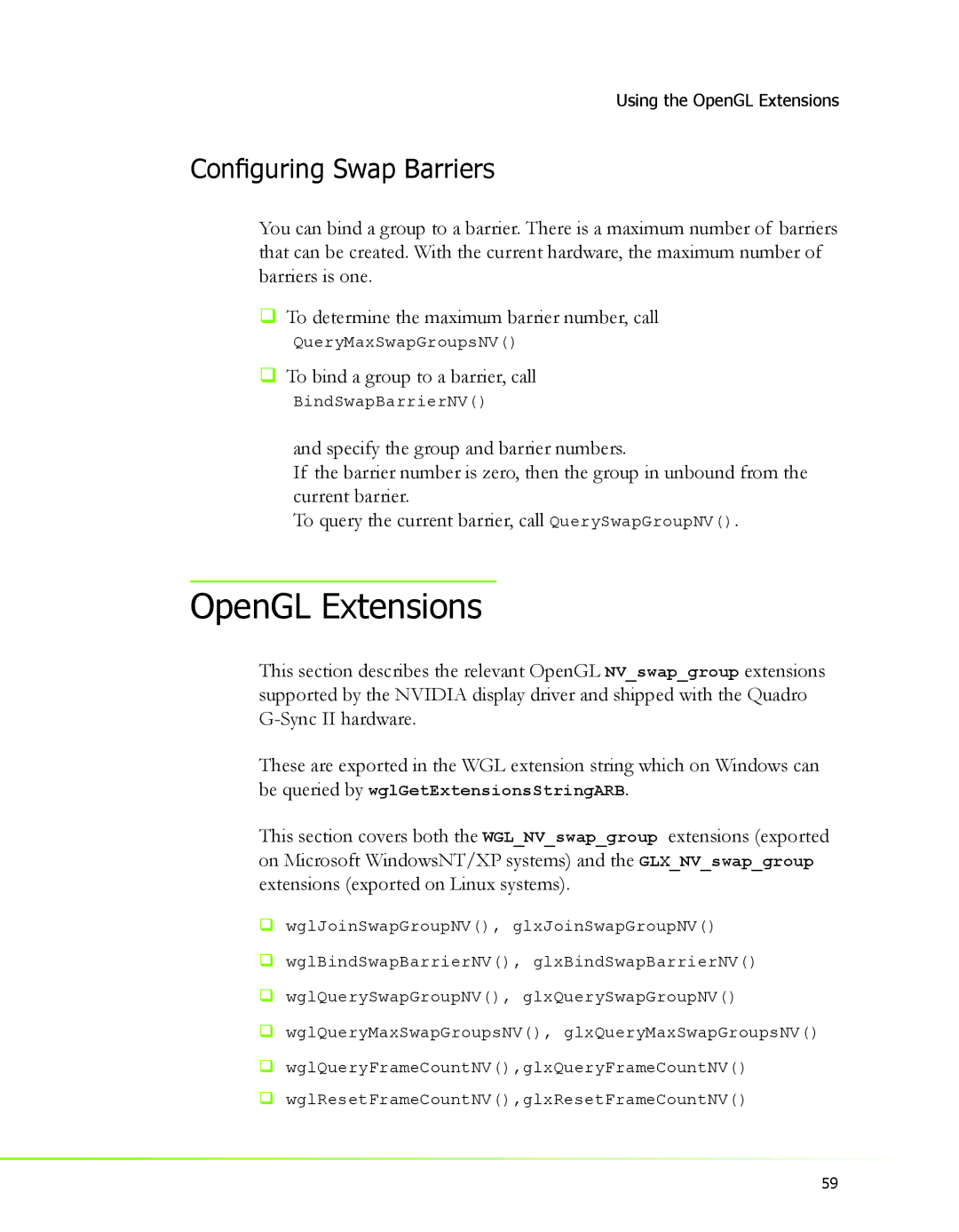
Using the OpenGL Extensions
Configuring Swap Barriers
You can bind a group to a barrier. There is a maximum number of barriers that can be created. With the current hardware, the maximum number of barriers is one.
To determine the maximum barrier number, call
QueryMaxSwapGroupsNV()
To bind a group to a barrier, call
BindSwapBarrierNV()
and specify the group and barrier numbers.
If the barrier number is zero, then the group in unbound from the current barrier.
To query the current barrier, call QuerySwapGroupNV().
OpenGL Extensions
This section describes the relevant OpenGL NV_swap_group extensions supported by the NVIDIA display driver and shipped with the Quadro
These are exported in the WGL extension string which on Windows can be queried by wglGetExtensionsStringARB.
This section covers both the WGL_NV_swap_group extensions (exported on Microsoft WindowsNT/XP systems) and the GLX_NV_swap_group extensions (exported on Linux systems).
wglJoinSwapGroupNV(), glxJoinSwapGroupNV()
wglBindSwapBarrierNV(), glxBindSwapBarrierNV()
wglQuerySwapGroupNV(), glxQuerySwapGroupNV()
wglQueryMaxSwapGroupsNV(), glxQueryMaxSwapGroupsNV()
wglQueryFrameCountNV(),glxQueryFrameCountNV()
wglResetFrameCountNV(),glxResetFrameCountNV()
59
